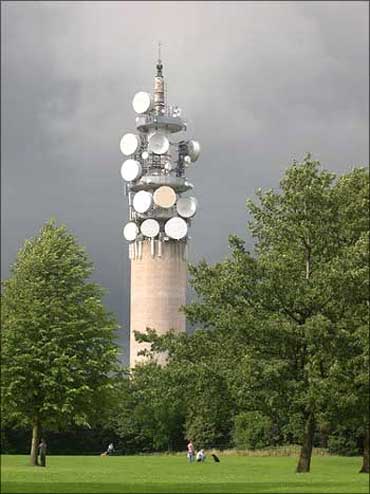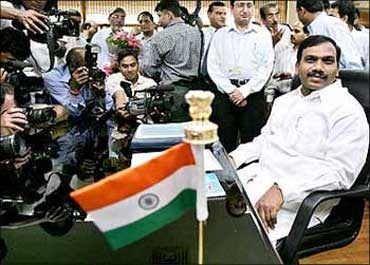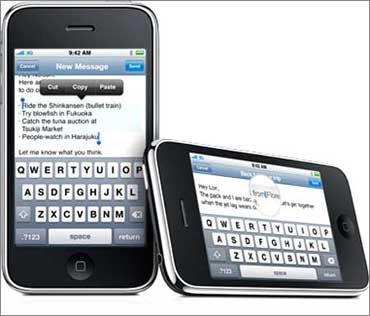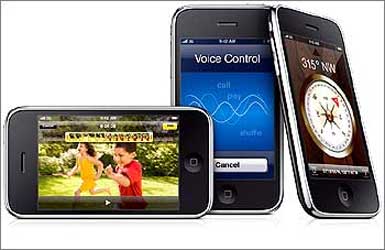

Radio spectrum refers to a range of radio frequencies. The bandwidth of a radio signal is the difference between the upper and lower frequencies of the signal. For example, in the case of a voice signal having a minimum frequency of 200 hertz (Hz) and a maximum frequency of 3,000 Hz, the bandwidth is 2,800 Hz (3 KHz).
The amount of bandwidth needed for 3G services could be as much as 15-20 Mhz, whereas for 2G services a bandwidth of 30-200 KHz is used. Hence, for 3G huge bandwidth is required.
How is 3G different from 2G and 4G?
While 2G stands for second-generation wireless telephone technology, 1G networks used are analog, 2G networks are digital and 3G (third-generation) technology is used to enhance mobile phone standards.
3G helps to simultaneously transfer both voice data (a telephone call) and non-voice data (such as downloading information, exchanging e-mail, and instant messaging. The highlight of 3G is video telephony. 4G technology stands to be the future standard of wireless devices.
. . .

3G services will enable video broadcast and data-intensive services such as stock transactions, e-learning and telemedicine through wireless communications.
All telecom operators are waiting to launch 3G in India to cash in on revenues by providing high-end services to customers, which are voice data and video enabled. India lags behind many Asian countries in introducing 3G services.
What are the issues regarding 3G for providers and users?
3G has successfully been introduced in Europe. But several issues continue to hamper its growth.
Pricing has been a cause of concern. Spectrum auctions ran into billions of euros in Europe. In Europe, spectrum licensing fees were collected years before the 3G service was developed and it required huge investments to build 3G networks, hitting mobile operators' margins.
However, in Japan and South Korea, spectrum licensing fees were not applicable as the focus of these countries were national IT infrastructure development.
. . .

Calling it the largest scam in independent India, the Bharatiya Janata Party in Octobber 2009 that there were irregularities in allotting wireless radio spectrum and licences by the telecom ministry to nine private operators in 2007.
The government had in 2007 recommended an 'open licence regime'. 'Applications for telecom licences were invited setting October 1, 2007, as the deadline. An artificial cut-off date, September 25, 2007, was created and applications received between September 25 and October 1 were summarily rejected. Rules of the game were changed after the game had begun,' the BJP charged.
The BJP alleged that 'all friendly applicants, mostly real estate companies, had been advised to put in their applications before September 25'.
The licences and the spectrum allocation were then allotted to nine operators at a price of Rs 1,650 crore (Rs 16.50 billion) per operator. This price was not taken on the basis of the 2007 market value but on the basis of an auction held in 2001.
The value of the licence and spectrum in 2007 could not be the same as in 2001 as the telecom market has grown phenomenally during this period.
However, Prime Minister Manmohan Singh said allegations about the scam were incorrect. The prime minister had earlier expressed his reservations about inducting A Raja in the Cabinet. The CPI(M) said that the United Progressive Alliance government had given away scarce spectrum at a fraction of the market price leading to heavy revenue losses to the nation and that Raja must be sacked.
Now, the Comptroller and Auditor General (CAG) has accused telecom minister A Raja of causing a loss of over Rs 26,000 crore (Rs 260 billion) to the government by disregarding the advice of many experts and persisting with a faulty and outdated policy for issuing new telecom licences.
Raja has refuted allegations of all wrongdoing and added that the licenses and spectrum had been allocated in conformity with the government's telecom policy.
. . .

The final bidders, include Bharti Airtel, Reliance Telecom, Idea Cellular, Vodafone Essar, TTSL and Aircel for pan India. Vodafone Essar, Idea Cellular, Tata Teleservices will bid for airwaves in all 22 service areas.
The government is auctioning three slots in 17 telecom service areas, and four in the remaining five areas. Other circles including four metros -- Delhi, Mumbai, Kolkata and Chennai -- will have three private players.
All 11 companies that had applied to participate in the auction of spectrum to offer broadband wireless access (BWA) have been cleared for the next stage of auction. Bharti, Reliance Communications, Vodafone Essar and Idea Cellular figure among the BWA applicants as well.
. . .

Japan was the first country to introduce 3G on a large commercial scale. In 2005, about 40 per cent of subscribers used only 3G networks. It is expected that during 2006 the subscribers would move from 2G to 3G and upgrade to the next 3.5 G level.
The success of 3G in Japan also shows that video telephony was the killer application for 3G networks. Downloading music was the biggest draw in 3G services.
In how many countries does 3G exist?
There are about 60 3G networks across 25 countries . In Asia, Europe and the USA, telecom firms use WCDMA technology. The WCDMA standard provides seamless global evolution from today's GSM with support of the worlds' largest mobile operators.
WCDMA technology is built on open standards, wide ranging mobile multimedia possibility, and vast potential economies of scale with the support of around 100 terminal designs to operate 3G mobile networks.
3G services were introduced in Europe in 2003.